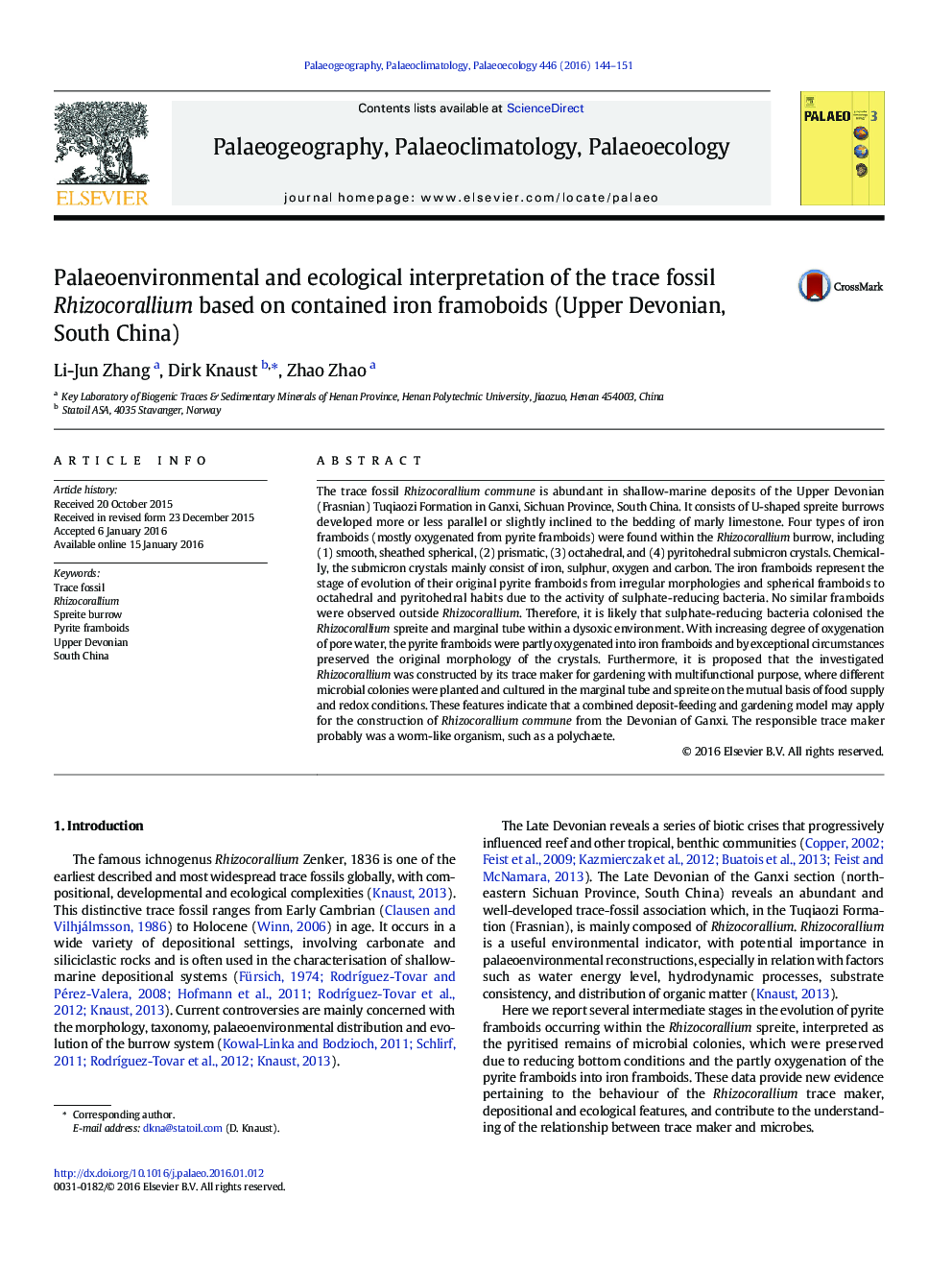| کد مقاله | کد نشریه | سال انتشار | مقاله انگلیسی | نسخه تمام متن |
|---|---|---|---|---|
| 6349418 | 1622145 | 2016 | 8 صفحه PDF | دانلود رایگان |

- Abundant iron framboids with residual sulphur were found within the burrow Rhizocorallium.
- The different iron framboids represent the micro-environment redox conditions due to the activity of the trace maker together with sulphate-reducing bacteria.
- A deposit-gardening model can be applied for the Ganxi Rhizocorallium.
The trace fossil Rhizocorallium commune is abundant in shallow-marine deposits of the Upper Devonian (Frasnian) Tuqiaozi Formation in Ganxi, Sichuan Province, South China. It consists of U-shaped spreite burrows developed more or less parallel or slightly inclined to the bedding of marly limestone. Four types of iron framboids (mostly oxygenated from pyrite framboids) were found within the Rhizocorallium burrow, including (1) smooth, sheathed spherical, (2) prismatic, (3) octahedral, and (4) pyritohedral submicron crystals. Chemically, the submicron crystals mainly consist of iron, sulphur, oxygen and carbon. The iron framboids represent the stage of evolution of their original pyrite framboids from irregular morphologies and spherical framboids to octahedral and pyritohedral habits due to the activity of sulphate-reducing bacteria. No similar framboids were observed outside Rhizocorallium. Therefore, it is likely that sulphate-reducing bacteria colonised the Rhizocorallium spreite and marginal tube within a dysoxic environment. With increasing degree of oxygenation of pore water, the pyrite framboids were partly oxygenated into iron framboids and by exceptional circumstances preserved the original morphology of the crystals. Furthermore, it is proposed that the investigated Rhizocorallium was constructed by its trace maker for gardening with multifunctional purpose, where different microbial colonies were planted and cultured in the marginal tube and spreite on the mutual basis of food supply and redox conditions. These features indicate that a combined deposit-feeding and gardening model may apply for the construction of Rhizocorallium commune from the Devonian of Ganxi. The responsible trace maker probably was a worm-like organism, such as a polychaete.
Journal: Palaeogeography, Palaeoclimatology, Palaeoecology - Volume 446, 15 March 2016, Pages 144-151